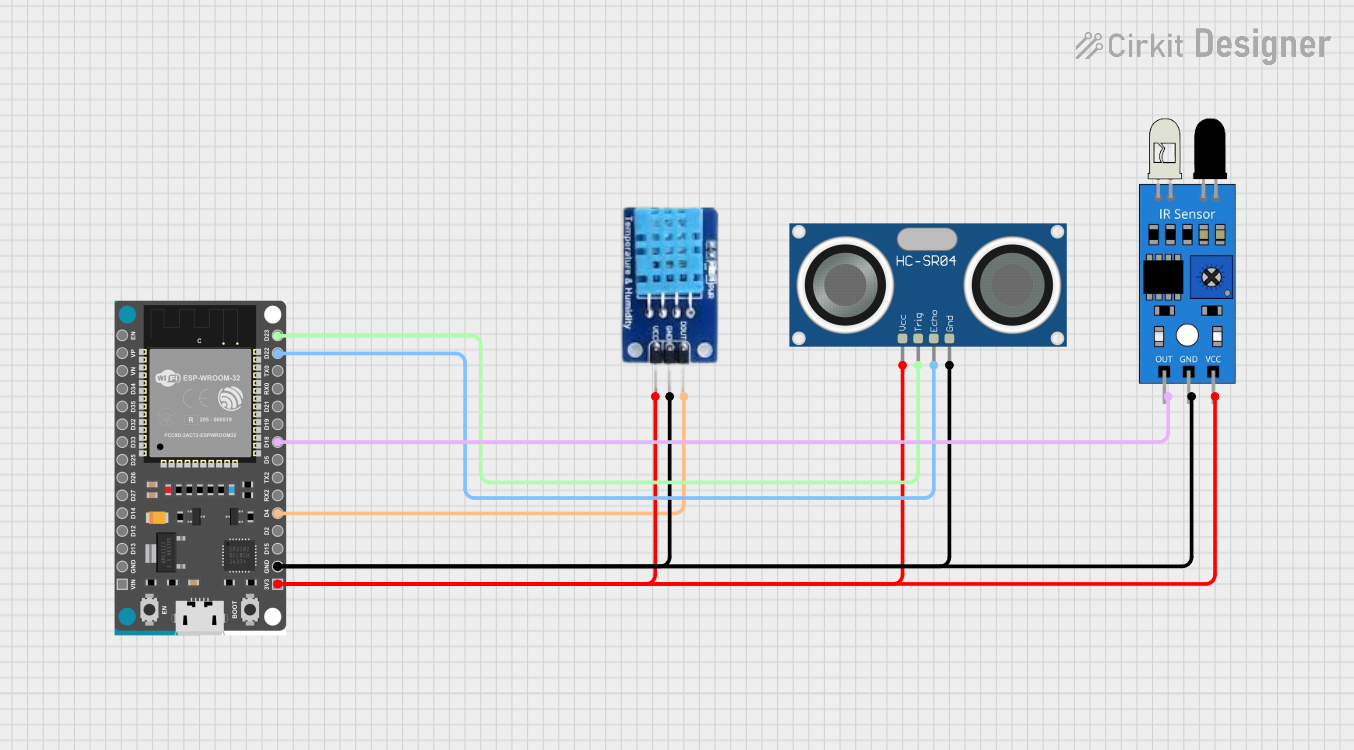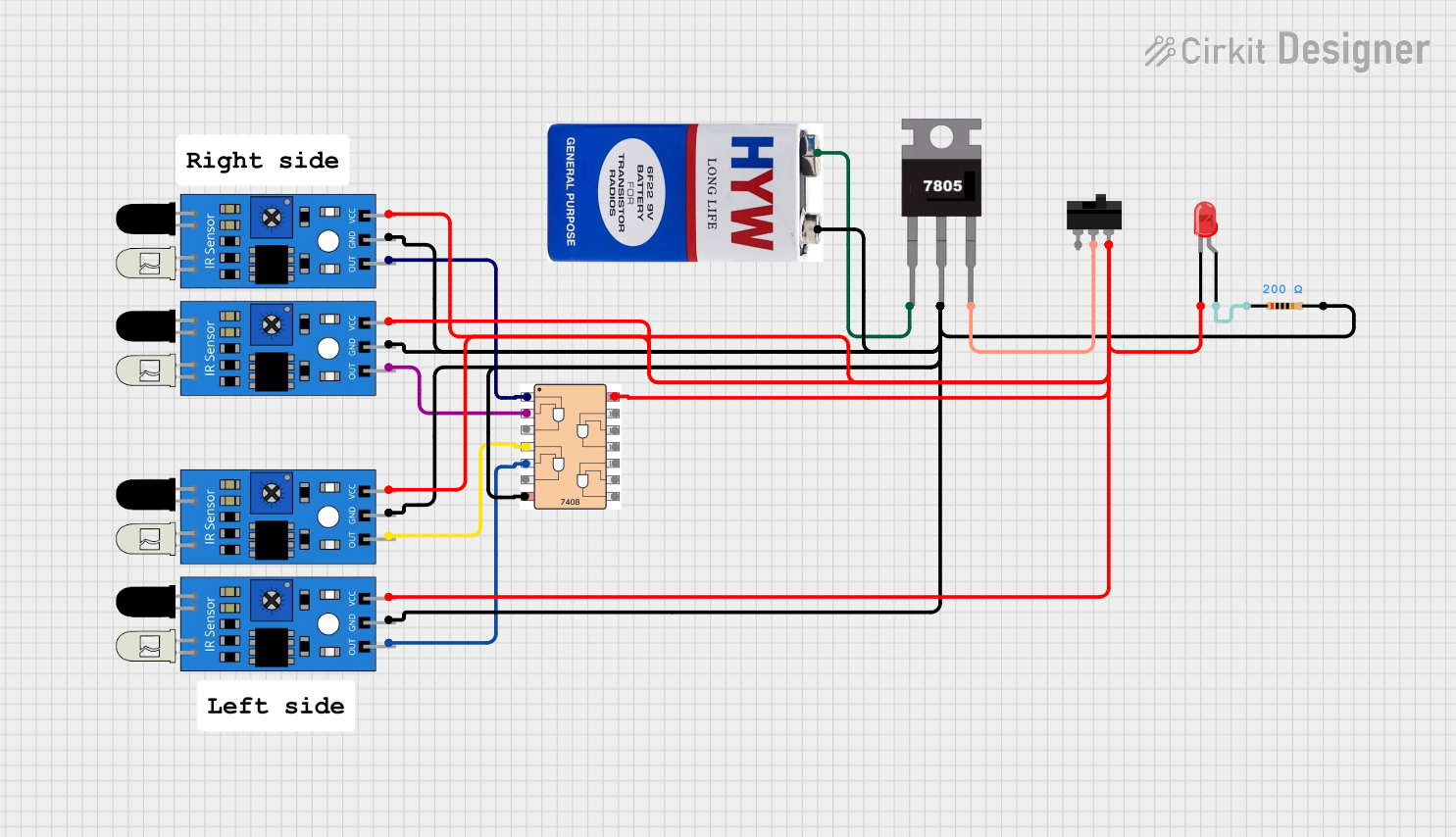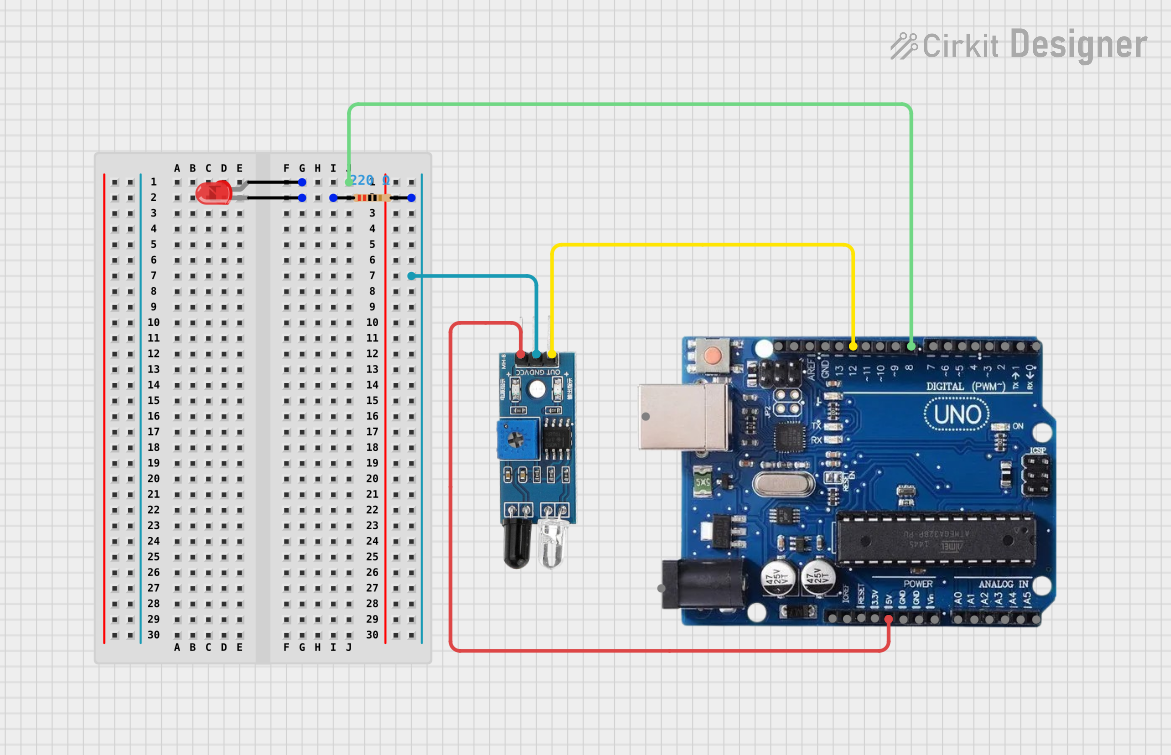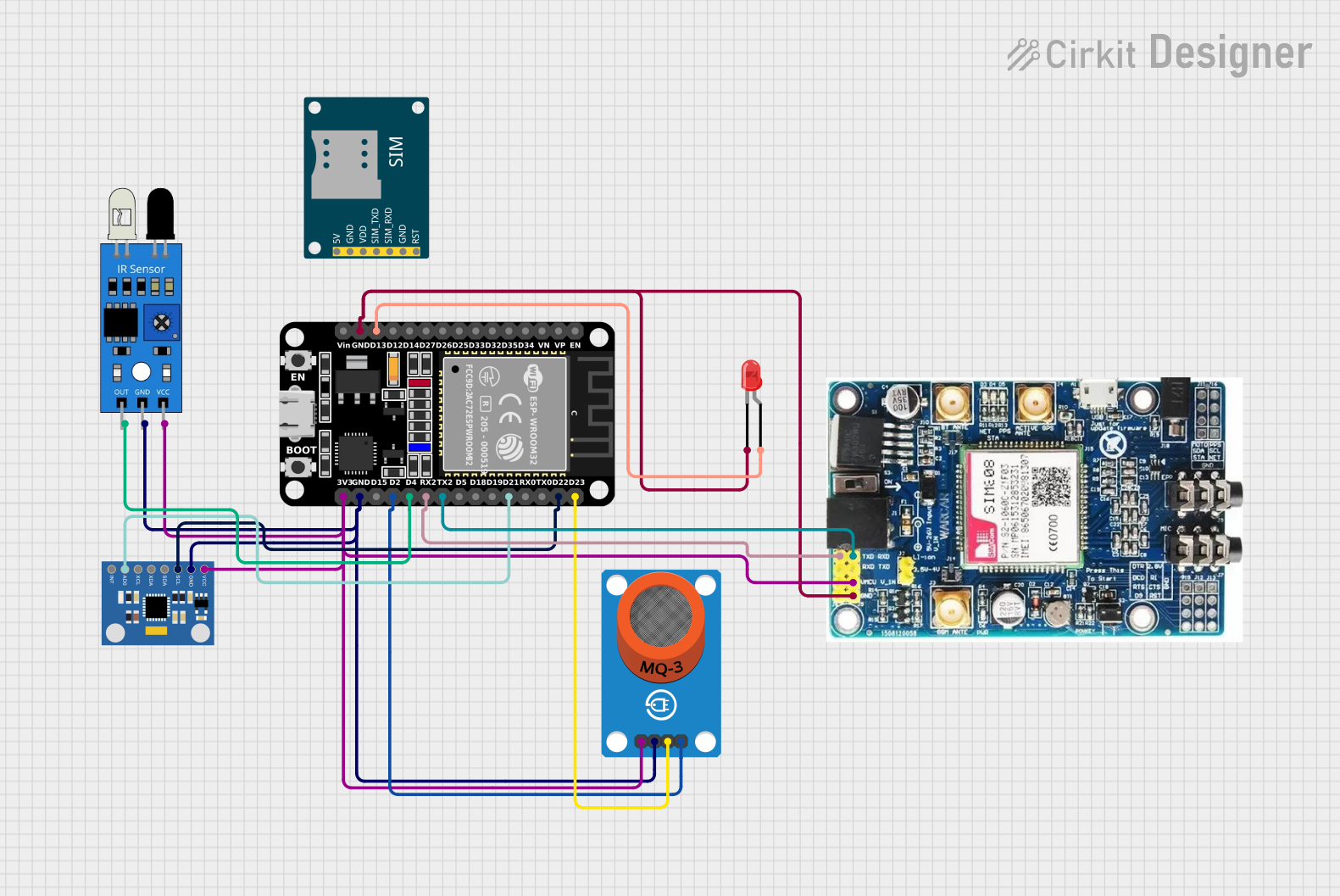
How to Use IR Reflectance Sensor: Examples, Pinouts, and Specs

 Design with IR Reflectance Sensor in Cirkit Designer
Design with IR Reflectance Sensor in Cirkit DesignerIntroduction
The IR Reflectance Sensor (Manufacturer: Cytron Technology, Part ID: Maker Reflect Sensor) is a compact and versatile sensor designed to detect the presence of objects or surfaces by emitting infrared (IR) light and measuring the reflected light. This sensor is widely used in robotics, automation, and industrial applications for tasks such as obstacle detection, line following, and edge detection.
Explore Projects Built with IR Reflectance Sensor

 Open Project in Cirkit Designer
Open Project in Cirkit Designer
 Open Project in Cirkit Designer
Open Project in Cirkit Designer
 Open Project in Cirkit Designer
Open Project in Cirkit Designer
 Open Project in Cirkit Designer
Open Project in Cirkit DesignerExplore Projects Built with IR Reflectance Sensor

 Open Project in Cirkit Designer
Open Project in Cirkit Designer
 Open Project in Cirkit Designer
Open Project in Cirkit Designer
 Open Project in Cirkit Designer
Open Project in Cirkit Designer
 Open Project in Cirkit Designer
Open Project in Cirkit DesignerCommon Applications
- Line-following robots: Detecting black or white lines on a surface.
- Obstacle detection: Identifying objects in the sensor's path.
- Edge detection: Preventing robots from falling off edges or platforms.
- Proximity sensing: Measuring the distance to nearby objects.
Technical Specifications
The following table outlines the key technical details of the Maker Reflect Sensor:
| Parameter | Value |
|---|---|
| Operating Voltage | 3.3V to 5V |
| Operating Current | ~20mA |
| Detection Range | 1mm to 15mm (depending on surface) |
| Output Type | Digital (High/Low) |
| IR Wavelength | 940nm |
| Dimensions | 25mm x 10mm x 8mm |
| Weight | ~2g |
Pin Configuration
The Maker Reflect Sensor has a simple 3-pin interface. The pinout is as follows:
| Pin | Name | Description |
|---|---|---|
| 1 | VCC | Power supply input (3.3V to 5V) |
| 2 | GND | Ground connection |
| 3 | OUT | Digital output (High when reflection is detected) |
Usage Instructions
How to Use the Sensor in a Circuit
- Power the Sensor: Connect the
VCCpin to a 3.3V or 5V power source and theGNDpin to the ground of your circuit. - Connect the Output: Connect the
OUTpin to a digital input pin on your microcontroller (e.g., Arduino UNO). - Position the Sensor: Place the sensor facing the surface or object you want to detect. Ensure the detection range (1mm to 15mm) is maintained for optimal performance.
- Read the Output: The sensor outputs a digital HIGH (logic 1) when it detects a reflective surface and a digital LOW (logic 0) otherwise.
Important Considerations
- Surface Reflectivity: The sensor's performance depends on the reflectivity of the surface. Highly reflective surfaces (e.g., white or shiny materials) provide better detection, while dark or matte surfaces may reduce sensitivity.
- Ambient Light: Avoid using the sensor in environments with strong ambient IR light (e.g., direct sunlight), as it may interfere with detection.
- Mounting: Ensure the sensor is securely mounted to prevent misalignment during operation.
Example Code for Arduino UNO
The following code demonstrates how to use the Maker Reflect Sensor with an Arduino UNO to detect a reflective surface:
// Define the pin connected to the sensor's OUT pin
const int sensorPin = 2; // Digital pin 2
const int ledPin = 13; // Built-in LED for visual feedback
void setup() {
pinMode(sensorPin, INPUT); // Set sensor pin as input
pinMode(ledPin, OUTPUT); // Set LED pin as output
Serial.begin(9600); // Initialize serial communication
}
void loop() {
int sensorValue = digitalRead(sensorPin); // Read the sensor output
if (sensorValue == HIGH) {
// If reflection is detected, turn on the LED
digitalWrite(ledPin, HIGH);
Serial.println("Reflection detected!");
} else {
// If no reflection is detected, turn off the LED
digitalWrite(ledPin, LOW);
Serial.println("No reflection detected.");
}
delay(100); // Small delay for stability
}
Best Practices
- Use a pull-down resistor on the
OUTpin if the microcontroller's input pin is floating. - Test the sensor in the intended environment to ensure reliable operation.
- Clean the sensor lens periodically to remove dust or debris that may affect performance.
Troubleshooting and FAQs
Common Issues and Solutions
Sensor Not Detecting Objects
- Cause: The object is outside the detection range.
- Solution: Ensure the object is within 1mm to 15mm of the sensor.
False Detections
- Cause: Strong ambient IR light interference.
- Solution: Shield the sensor from direct sunlight or other IR sources.
No Output Signal
- Cause: Incorrect wiring or insufficient power supply.
- Solution: Verify the connections and ensure the power supply voltage is within the specified range (3.3V to 5V).
Inconsistent Readings
- Cause: Dust or dirt on the sensor lens.
- Solution: Clean the sensor lens with a soft, dry cloth.
FAQs
Q: Can the sensor detect black surfaces?
A: The sensor may struggle to detect black or non-reflective surfaces due to low reflectivity. Consider using a different sensor for such applications.
Q: Is the sensor compatible with 3.3V microcontrollers?
A: Yes, the Maker Reflect Sensor operates at both 3.3V and 5V, making it compatible with a wide range of microcontrollers.
Q: Can I use multiple sensors in the same circuit?
A: Yes, you can use multiple sensors, but ensure each sensor's output is connected to a separate input pin on the microcontroller.
Q: How do I extend the detection range?
A: The detection range is fixed (1mm to 15mm). For longer ranges, consider using an ultrasonic or laser-based sensor.
This concludes the documentation for the Maker Reflect Sensor. For further assistance, refer to the manufacturer's datasheet or support resources.